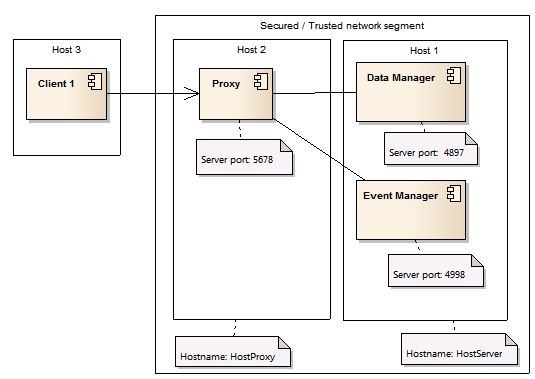config file entries:
Host 1 => WinCC OA Server Name: winccoa
# nothing is needed
Host 2 => Proxyhost where the proxy runs: scada
[general]
dataHost = "winccoa"
eventHost = "winccoa"
[proxy]
server = "winccoa:4897"
server = "winccoa:4998"
Host 3 => Client
[general]
data = "winccoa"
event = "winccoa"
mxProxy = "winccoa scada:5678 cert"
if you do not add the [proxy] configuration at the proxy host then you will get following error when you try to connect from the client:
WCCILproxy (1), 2014.05.27 21:09:21.486, SYS, INFO, 222, Accept SSL connection from host ::ffff:192.168.1.125:1485.
WCCILproxy (1), 2014.05.27 21:09:26.078, PARAM,WARNING, 209, Cannot find the host in the list of the allowed-hosts: (winccoa:4897)

